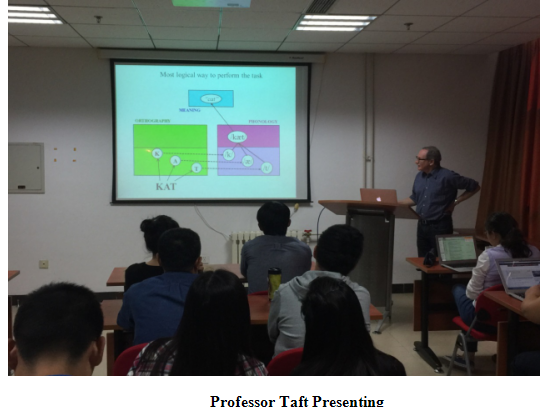主讲人:Marcus Taft(新南威尔士大学 教授)
时间:2021年4月28日(周三)14:00
与会方式:ZOOM会议(会议ID:750 888 0655 密码:CCSL2021)
讲座简介:There is now considerable evidence that L2 English speakers show masked form priming (e.g., the masked presentation of pillow facilitates lexical decision responses to PILL relative to an orthographically unrelated control, and the same for thorough-ROUGH). L1 English speakers do not show this. This talk explores the basis for this difference between L1 and L2 speakers and, in so doing, provides suggestions for what L1 and L2 speakers might be doing differently when reading English words.
专家简介:Marcus Taft is an Emeritus Professor in the School of Psychology at the University of New South Wales, Sydney Australia, where has been located for more than 40 years He is the author of well over 100 publications, including the book Reading and the Mental Lexicon. His research looks at the cognitive mechanisms involved in adult word comprehension, primarily lexical processes in reading, with the over-arching theme being the question of how readers make use of the internal structure of words in order to recognize them. How is the orthographic structure of a word represented in the "mental lexicon" and what are the optimal decoding strategies for reading words written in the particular orthography of one's language? In addition to his research on the English language, Marcus has published papers about lexical processing in Chinese, Japanese, Korean, Spanish, and French. In more recent years, he has been actively involved in research into bilingual processing, which is the topic of the current presentation.
